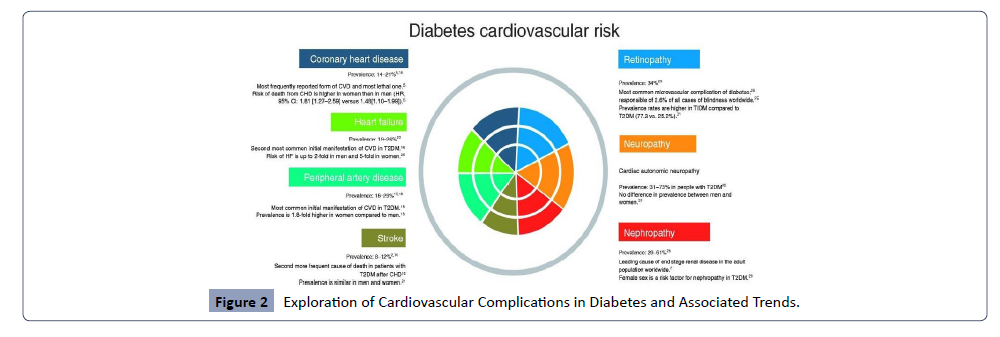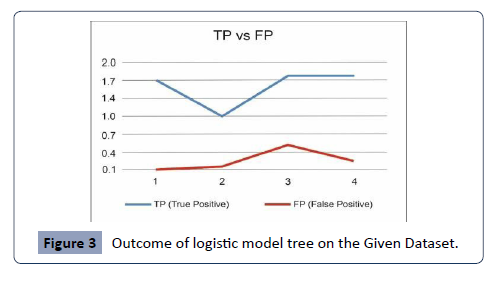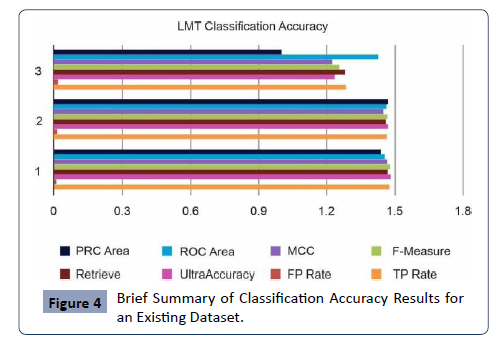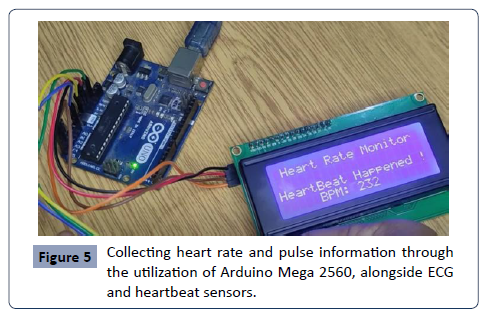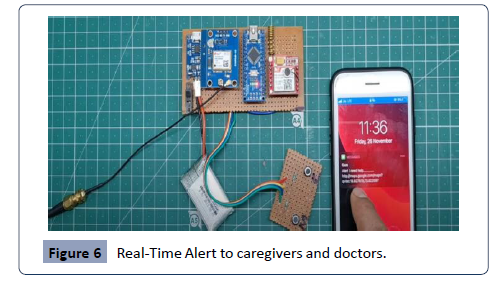Abstract
IoT is a revolutionary breakthrough that has the potential to revolutionize critical sectors such as healthcare. This article proposes a highly effective approach to monitoring expecting mothers in remote regions of developing countries using wearable sensing technology. This technology not only tracks the health of the pregnant woman but also informs her and her family of any potential health concerns. Despite extensive research and efforts to lower maternal and fetal mortality rates, they remain persistently high. Innovative IoT technology improving monitoring can be a significant game-changerin the health of pregnant women residing in remote areas of developing nations. Through intelligent machine learning algorithms. Given the substantial influx of data that these healthcare systems manage, considerable advancements have also been observed in the arena of computational platforms. Scholarly literature pertinent to this subject attests to the prospective transformative influence of ICTenabled systems in the enhancement of maternal and infant health standards. This piece of writing assesses wearable detectors and AI algorithms within pre-existing frameworks devised to anticipate potential hazards throughout the course of pregnancy and the postpartum phase, encompassing both maternal and infant aspects. The appraisal encompasses an examination of the sensors and AI algorithms integrated into these frameworks, dissecting each methodology based on its distinctive attributes, resulting effects, and pioneering elements in a sequential manner. Additionally, it engages in a discourse pertaining to the datasets employed, expounding upon the obstacles encountered while also extending insights into potential avenues for future scholarly endeavors.
Keywords
Revolutionizing maternal healthcare; IoT; Wearable sensors; Artificial intelligence
Introduction
Preventable complications during pregnancy and childbirth claim the lives of numerous women in low-and middle-income countries, making it imperative to take immediate and effective action to reduce maternal mortality rates. This is due to a lack of knowledge regarding risk factors, which can be easily prevented with the appropriate information and resources [1]. However, accessing pregnancy-related care can be difficult and expensive, with devices often only available in health complexes. Complications during pregnancy and childbirth are the leading cause of preventable deaths among pregnant women worldwide, particularly in low and middle-income countries. These complications often occur due to a lack of knowledge about the associated risk factors. Unfortunately, accessing pregnancyrelated care can be a challenging and costly affair since many of the necessary devices are only available in health complexes. In the context of neonatal or new-born well-being, several noteworthy concerns capable of triggering health complications come to the fore. These include underdeveloped fetal growth within the womb, oxygen deprivation during childbirth, infections originating from maternal vaginal delivery during labor, instances of difficult shoulder delivery, inhalation of meconium, bloodstream infection, early birth leading to inadequate lung development, and a range of inborn irregularities. Addressing the intricacies associated with both maternal and infant health requires timely identification and effective communication to healthcare providers, ensuring prompt intervention. However, accessing medical aid within a suitable timeframe poses a formidable challenge, particularly within rural regions. This paper proposes a remote healthcare system to address maternal healthcare issues in non-urban developing countries. The system involves collecting patients by leveraging IoT-based medical sensors to collect and analyze data, we can confidently predict maternal health status and seamlessly transfer the information to the relevant parties ‘data to medical experts for remote viewing [2-4]. A remote healthcare system is proposed in this paper to tackle maternal healthcare issues in non-urban developing countries. The system incorporates the use of IoT-based medical sensors to collect patient data, which is then processed to predict maternal health status. The data is then transferred to medical experts for remote viewing, ensuring timely and effective healthcare interventions.
To grapple with the challenges posed by extensive data and computational demands, diverse computing frameworks like edge, fog, and cloud platforms play a pivotal role in facilitating data storage, processing, and classification. The process commences with the collection of data from sensors responsible for monitoring patients' health conditions through quantifiable health metrics. Subsequently, the fog layer utilizes protocols to optimize outcomes. Harvested data undergoes analysis, processing, and classification using dedicated algorithms, facilitating decision-making at the interface. Processed data is then utilized its repository within the expanse of the cloud layer, poised for subsequent rounds of refinement. II. Assessment of Risk Factors During Pregnancy The consideration of factors Age, weight, blood pressure, existing health conditions, heart rate, body temperature, and physical activity are all important factors to consider, medical professionals are able to predict potential medical outcomes. In doing so, a panoramic vista of challenges [5] (Table 1).
|
Parameters &Vital Signs
|
Low
|
Mid
|
High
|
|
Body Temperature [2]
|
Averages about98.7°F (37°C).
|
<98.7F (37 C)and>102F (38.8 C)
|
Temperatures of 102 F (38.8 C) or higher and below 95 F (>35 C) indicate hypothermia
|
|
Heart Beats[3]
|
The heartbeat rate is 75-80 beat per minute
|
The normal range for the human heartbeat is betw 90 and 140 beats per minute
|
The heartbeat should be more than 70 and less than 140 beats per minute.
|
|
Blood Pressure (BP)[9]
|
Systolic
120-139 mm
Hg, diastolic 80-89 mm H
|
Systolic 140-159 mm
Hg, diastolic 90-99 mm Hg
|
The systolic blood pressure is 160 mm Hg or higher, the diastolic blood pressure is 100 mm or higher
|
|
Age [9]
|
21-30
|
31-36
|
37-47
|
|
Fetal Movement [5]
|
In the span of 12 hours,12 movements which may include kicks, flutters, or rolls. Approximately 6,000 movements every 2-hour period.
|
Within a span of 12 hours, there should be 12. Maximum of 6,000 movements every 2 hours.
|
>12 movements
Such as kicks, flutters, or rolls. within 12 hour>6k/2hrs
|
|
Blood glucose
(2-hour glucose) [37]
|
<7.9 (<140)
mmol/l(mg/dl)
|
<7.9 (<140)
and≥7.9(≥140)
mmol/l(mg/dl)
|
≥11.2(≥200)
mmol/l(mg/dl)
|
|
BMI [3]
|
(18.6–24.8 kg/m2)
|
(18.6–24.8 kg/m2)
|
Underweight is defined as a BMI of less than 1 kg/m². Overweight is defined as a BMI of 25-29 kg/m², while obesity is defined as a BMI of 30- kg/m²
|
|
HbA1c, blood glucose [1]
|
<42 mmol/mol
<6.2 (<110)
|
42-46 mmol/mol
≥6.2(≥110)&
|
≥48mmol/mol ≥7.1 (≥126)
|
|
Blood glucose (Fasting glucose) [1]
|
Mmol /l(mg/dl)
|
<7.1(<126) mmol/l(mg/dl)
|
mmol/l(mg/dl)
|
Table 1. Below are the relevant medical parameters, Vital Signs, associated values, and weights that are significant during pregnancy.
Risks for expectant mothers confidently. Table 1 provides a summary of these parameters, including their values, weights, and references. The initial analysis of these basic medical factors is crucial in determining the risk level and worst-case scenarios. To predict medical risks for pregnant women, medical experts possess the ability to thoroughly assess a multitude of factors, encompassing. Table 1 summarizes the parameters, including age, weight, blood pressure, pre-existing medical conditions, heart rate, body temperature, and levels of physical activity, along with their respective values, weights, and references [6].
A distinct illustration of the distinctive attributes and innovations of this review vis-à-vis analogous works is encapsulated in Table 1. Through this comparative analysis, a clear differentiation between the present article and preexisting relevant reviews becomes evident, elucidating the unique contributionss it brings forth.
Our goal is to investigate in the field of maternal and infant healthcare, wearable sensing technologies and AI/ML strategies are being employed to improve health and prospects on the horizon for subsequent endeavors within this domain will emerge, ushering in novel pathways for future advancements [7].
Assured analysis of risk factors in a diabetes dataset for females
This research involved a thorough analysis of an existing dataset of diabetes patients. The data was extensively pre-processed, filtered, and categorized with the aid of medical experts and an extensive literature search. As a result, the risk factors were accurately identified and categorized with a high degree of confidence. After conducting a thorough analysis of an extensive dataset of patients with diabetes, the risk factors were expertly categorized with the assistance of medical professionals and indepth literature research. Pre-processing and filtering were also utilized to ensure the accuracy and reliability of the findings [8].
The University of Waikato in New Zealand has developed exceptional data mining software called Weka. With its stateof- the-art algorithms and imaging tools for data pre-processing, it is undoubtedly a valuable and powerful tool for classification, regression, visualization, clustering, and feature selection tasks screening procedure culminated in a refined cohort of 96 articles that were deemed particularly relevant to the focus of the review. The visual depiction of the adopted methodologies is elegantly encapsulated within Figure 1.
Figure 1: Proposed System Mode.
This aggregate was then subjected to a subsequent winnowing process wherein the number of pertinent articles was further pruned, taking into consideration an examination of titles and abstracts. This rigorous offering a graphical representation of the material and methods pursued throughout the course of this research (Figure 2).
Figure 2: Exploration of Cardiovascular Complications in Diabetes and Associated Trends.
The Logistic Model Tree (LMT) is a remarkably powerful and highly accurate machine learning algorithm that expertly combines logistic regression and decision tree for binary and multi-class classification tasks. With the ability to handle numeric and nominal attributes, as well as missing values, LMT achieves an accuracy of nearly 97%. The LMT algorithm is a precise and efficient tool that uses logistic regression models and a tree structure for classification tasks. It can handle binary and multiclass targets, numeric and nominal attributes, and missing values with ease [9-11].
Evaluating the precision of real data samples through analysis
IoT devices are reliable in collecting accurate health data of pregnant women, which is then verified by medical experts. The devices promptly send notifications to both the women and their families about their health conditions and risk levels. With the help of algorithms developed by medical professionals, the risk level of each pregnant woman is precisely determined. The LMT algorithm has been proven to exhibit the highest accuracy
in detecting pregnancy risk levels, not just for the training set data but also for cross-folding validations. It can be confidently stated that the LMT algorithm is the most accurate in detecting pregnancy risk levels based on the dataset of risk parameters. The text discusses a comprehensive evaluation of maternal and infant health monitoring systems, which highlights the effectiveness of IoT devices in gathering accurate health data systems is conducted in this section, adhering to the sequential plan depicted in Figure 1. The exploration embarks with an indepth analysis of maternal healthcare systems, elucidating the nuances of the sensors harnessed and the AI/ML methodologies deftly employed.
In a seamless transition, the examination seamlessly pivots to infant healthcare systems, casting a discerning gaze on the spectrum of sensing technologies underpinning their function and the intricate array of AI/ML techniques that find adept application. This thorough discussion is presented in two consecutive parts. Segment 5.3 focuses on sensing technologies, while Segment 5.2 delves into the diverse realm of AI/ML methodologies, as depicted in Figure 3.
Figure 3:Outcome of logistic model tree on the Given Dataset.
Below are the experimental findings from the analysis of the Indian diabetes dataset
Accuracy of classification: In Figure 3, the LMT algorithm is applied to the existing dataset and achieves an accuracy of almost 98%. LMT is a combination of logistic regression and treebased machine learning algorithms. The y-axis of the bar chart represents the risk intensity levels of the existing dataset, which are labelled as 3 for high-level risk, 2 for mid-level risk, and 1 for low-level risk for better representation of the results (Figure 4).
Figure 4: Brief Summary of Classification Accuracy Results for an Existing Dataset.
The confusion matrix clearly shows the true positive and false positive rates, with a very low false positive rate maximizing the accuracy and performance of the algorithm for this dataset B (Table 2).
|
Decoding Performance
|
Lower
|
High
|
Lower
|
Mid
|
|
Anticipated Outcome
|
|
630
|
0
|
9
|
|
Mid
|
0
|
567
|
8
|
|
High
|
4
|
6
|
89
|
Table 2. Decoding Performance
Making predictions using LMT: LMT is a highly effective tool for predicting risk levels with great accuracy. The model was trained using the available dataset and then tested on data from five new patients producing absolutely error-free results, as shown [12] in Figure 4. To categorize the risk level, Table 1 is the perfect reference point. Our LMT model has unmatched accuracy in predicting risk levels. It was trained on existing datasets and tested on five new patient data with error-free results (Figure 3). Table 1 serves as the definitive reference point for risk level categorization.
The alarming prevalence of premature births has introduced significant health challenges for infants, necessitating prolonged stays in incubator systems. However, manual monitoring proves arduous, prompting the integration of cloud computing, IoT, and wireless medical sensors to enhance healthcare management. A new system was introduced to ensure doctors' and incubator monitoring system's accuracy and security, guarding against impersonation and replay attacks [13-16].
This system aims to implement an efficient authentication protocol with a new encryption scheme to continuously monitor infants' vital signs. It reduces the need for nurses and doctors and optimizes cost-effectiveness and performance while maintaining strict security measures. I am confident that the proposed encryption scheme is an excellent solution. It effectively enhances computation efficiency while maintaining the utmost security of the information. Friendly The analysis of various types of data continues to yield valuable insights in the field of epilepsy research. An intriguing work has been conducted, comparing wristband data to seizure surrogate data, with promising results in the understanding and prediction of seizures. It is truly remarkable how technology can aid in the management and comprehension of medical conditions. The research revealed distinct differences in signals between preictal and inter-periods, which could be used to develop individualized seizure markers. The Electronic Design Automation (EDA) signal entropy proved to be an efficient way to improve seizure detection in a subset of patients. This approach provided us with valuable insights into seizure pathophysiology and ANS functionality while keeping costs low.
Proposed system model
Flow diagram of integrated model: In order to ensure the wellbeing of pregnant women, it is imperative to diagnose and treat them with timely medical attention and provide them with proper medication. To this end, our proposed model has been developed to offer better and real-time medical care at a lower cost. As depicted in Figure 5, the system model is designed to provide efficient and effective medical care to pregnant women, and we are confident that it will significantly improve the quality of care they receive (Figure 1).
Our proposed system model has a crucial goal of reducing maternal mortality rates while providing better care for pregnant women residing in rural areas. However, most hospitals use expensive, non-portable, and sophisticated devices [17].
To address this issue, we aim to develop a compact and efficient assist system that can assess the vital signs of both rural pregnant women and the fetus using RFID tags that are wearable sensing devices. In regions undergoing development, the prompt diagnosis of pneumonia remains a rarity.
Although lung ultrasound serves as a valuable diagnostic tool, its utility is constrained by the requirement for skilled personnel. To surmount these limitations, an automated classification methodology for pneumonia was introduced.
IoT device model and results
The system shown in figure accurately displays patients' temperature, pulse, and heart rate readings, and the same is being alerted on mobile, as depicted in Figures 5 and 6.
Figure 5:Collecting heart rate and pulse information through the utilization of Arduino Mega 2560, alongside ECG and heartbeat sensors.
Figure 6: Real-Time Alert to caregivers and doctors.
The approach involves the removal of skin and tissue artefacts from lung ultrasound frames, followed by the analysis of these frames utilizing an Artificial Neural Network (ANN). This ANN is trained to accurately discern healthy lungs from infected ones using a dataset of 60 ultrasound frames.
The outcomes illustrate that the proposed approach attains a sensitivity of 90%, suggesting its potential in constructing an operator-independent system for timely pneumonia diagnosis [18].
The fundamental architecture of locomotion is unveiled through the earliest motor skills of an infant, serving as determinants of developmental progression. Conversely, motor dysfunction exerts adverse effects on spatial awareness, equilibrium, and cognition, with notable significance in the context of infants with autism spectrum disorder (ASD). ASD is associated with delays in sitting, standing, and head control [19-25].
The presented system harnesses a wireless apparatus named Opal sensors are highly advanced devices that possess a complex 3D structure magnetometer, 3D gyroscope, and 3D accelerometer, to comprehensively analyze the infant's movement patterns throughout the day. These sensors gauge the intricacy of motion in infants an imperative parameter for normative motor development, given that reduced bodily movement can signal ASD symptoms [26,27].
The detection of human well-being and development through high-resolution, sensitive image sensors is commonplace in the contemporary age. Nevertheless, these biological and environmental sensors prove costly and demand robust processing capabilities. Consequently, analyzing human activity during routine daily life at home poses a significant challenge. Confronting these obstacles, a detection mechanism is proposed, harnessing low-cost infrared (IR) technology-based sensors for location, thermal environment, motion, and temperature. This technology proves beneficial for long-term monitoring within a domestic environment [28-31].
The latest technique was evaluated for visualizing the thermal milieu and parental influences on the common marmoset's circadian rhythms. Initially, a comparative assessment was made against manual analysis for design validation.
Conclusion
Sensor-based frameworks have revolutionized healthcare systems, enabling timely medical assistance to patients in remote and underserved rural regions. The advent of wireless technology has facilitated the remote monitoring of maternal and infant health conditions through sensor utilization, enabling early detection of potential issues. Recent advancements in the realm of Artificial Intelligence (AI) have further empowered these healthcare systems, enabling predictive capabilities and providing valuable diagnostic support to medical practitioners.
Leveraging Internet of Things (IoT) applications, these systems offer swift and precise disease diagnoses, addressing challenges such as storage, cost, and latency. In this research, medical experts identified and categorized various risk factors. Machine learning algorithms were utilized to classify and predict risk levels in an existing dataset The risk level prediction was flawlessly executed in both instances, owing to seamless coordination with IoT-enabled devices to gather sample data. Crowdsourcing can be used to analyze and broadcast risk factors, improving health monitoring for patients and their families.
This investigation delves into maternal and infant-focused healthcare systems, meticulously examining and categorizing them based on sensor deployment and Machine Learning (ML) techniques as delineated in the latest scholarly works.
A comprehensive exploration of wearable sensors and IoT devices utilized for health monitoring is conducted, encapsulating their salient attributes and their specific applicability to maternal and infant health concerns. Moreover, intelligent and anticipatory algorithms are expounded upon, offering a profound insight into the cutting-edge research endeavors within this domain.
Smart healthcare services have a wide range of capabilities, including the ability to generate alerts through multiple computing platforms such as cloud, fog computing, and edge computing. Additionally, a compilation of real-world datasets is provided, encompassing attributes, size, format, and other essential details, serving as a valuable resource for researchers in quest of suitable datasets for their investigative pursuits. The exploration unveils a notable scarcity of available real-world datasets within this field.







